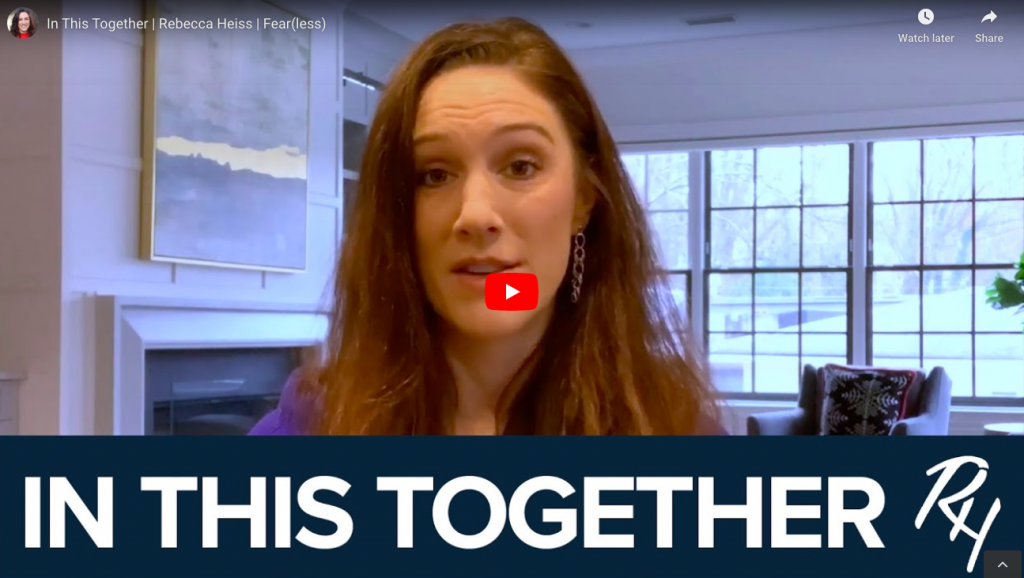The responsibility of knowing that our decisions have the potential to impact the lives of everyone on our team can be a daunting weight to carry even in the best of times. But when we have drastic disruptions to our businesses, that burden of responsibility can become crushing.
As our teams look to us for guidance and answers, how should we as leaders be responding?
Now more than ever we need to find ways to stop, think, and then communicate empathetically, clearly and responsibly, which means avoiding the behavioral pitfalls to which our instincts will direct us. Fear is biologically programmed to override many of our higher-order behaviors. It did a good job keeping our ancestors safe for hundreds of thousands of years by pushing them toward instinctual reactions when they faced a life-or-death threat. But today, in a drastically changed modern environment, when we allow fear to drive our behaviors, we give up the opportunity to make the best decisions for us and our teams.
None of us should be fearless, but as leaders, we need to be able to control our fears and sort them into buckets of truly immediately life-threatening situations (in which case our instinctual reactions might actually be beneficial) and those fears that require an override of our biology to ensure deeper thought and closer consideration. In other words, we need to become fear…less. We need to be real about risks without leaping immediately to a panicked, instinctual, full of fear, response.
In this article, I break down the three most common fear(full) behavioral responses people have during times of turmoil. Each example includes suggestions for ways to take a more fear(less) stance.
Fear(full) Response 1: The Short-Term Solver
Under times of extended stress, we naturally limit the options we consider. Instead of opening our eyes to all possibilities, it’s human nature to put the blinders on and return to the rules we know. Or at least the rules we think we know.
Our brains do us the disservice of burdening us with scientifically demonstrated cognitive impairment (i.e. impaired memory, impaired creativity, impaired decision-making etc.) at the time when we need them the most. It’s nature’s way of “saving us,” by reducing the tremendous amount of energy our brains would be consuming by thinking. Instead our biology redirects us to rely solely on instinct and the message our instincts send us is clear: “Survive. Nothing else matters but NOW.”
Instead of trading off a growth mindset for the satisfaction of quickly addressing a problem, a more fear(less) response would be to flip the narrative. It’s useful to ask “what does this problem look like in 12-months time?” Fixing any immediate issue in an uncertain environment might very well mean that tomorrow there is an entirely new issue, or that the issue you “fixed” wasn’t actually an issue at all. By flipping the narrative and keeping a long-term perspective, you can ensure you are more prepared as situations evolve, rather than accepting what feels like a static short-term situation.
Fear(full) Response 2: The Ego-Enhancer
Another natural response to uncertainty is to feel the need to reestablish ourselves as experts and authority figures. While it would be nice to have a leader with clear information and guidance, at the moment we are facing an unprecedented situation where some basic questions (how long will this last?) are still unanswerable. It is far more damaging to the organization to pretend we have all the answers when the reality is that we simply aren’t equipped or informed any more than most. It’s essential for us to show up to our teams with intention, but also vulnerability. It’s okay not to have all the answers. In fact, being willing to admit that is often exactly what your team needs to hear. It puts you at an empathetic level with them and allows you to exemplify the calm emotional stability that’s needed from everyone during this turbulent time.
We can still lead powerfully by expressing our doubt or uncertainty – the greatest leaders do. Now is the time for humility. Rather than losing trust by passing along information that may be less than accurate, approaching from the vulnerable position of the non-expert means you’ll be more likely to seek out credible sources of information. Confident leadership doesn’t require all the answers. It requires sorting what we do and do not know and distilling that message to clear, accurate communications. The more comfortable you become in knowing and communicating what you don’t know, the more trust you’ll build from your team.
Fear(full) Response 3: The Hideaway
Uncertainty can paralyze even the best leader. Particularly during stressful times when we might not feel like we are thinking clearly, our instincts signal for us to retreat or freeze. Rather than face the organization feeling scattered, we reduce or halt communication with our teams completely until we have a better grasp of the situation.
Ambiguous situations require the exact opposite of this fear(full) response. As leaders we need to communicate and be present to our employees even more than normal. As an example, think about that last time you were stuck sitting in an airplane on the tarmac that wasn’t going anywhere. There is nothing more frustrating than not knowing what’s happening. The best leaders at this time communicate often, even if they don’t have any information that is particularly relevant. “Ladies and gentlemen, we are still waiting on maintenance here, we will keep you up to date as we know anything more.” Despite not being a particularly useful communication, hearing that message from your pilot might keep your anxiety or anger levels in check. Teams are just as hungry for that bit of reassurance that they haven’t been forgotten.
I advocate that leaders establish frequent communication with their teams that reinforces three elements:
1) We are keeping you in mind, you haven’t been forgotten.
2) We are working to solve the problem, being clear about what is and what is not in our control.
3) We are taking these actions at the moment based on the information we have.
Our teams don’t need us to have all the answers, or solutions right away, but they will need us to communicate frequently to help quell their own fears.
The commonality between each of these fear(full) responses is that they are all biological. Especially in a time of upheaval, it’s unproductive to place blame or point fingers for why we or others on our teams are failing to respond effectively. We will all likely engage in at least some elements of these fear(full) responses in the coming weeks. But just because these behaviors are the biological default, doesn’t mean we don’t have the option to consciously do better. Fear(full) times, call for fear(less) leadership. You have the power to override your instincts and be the leader your team needs in these turbulent times.









